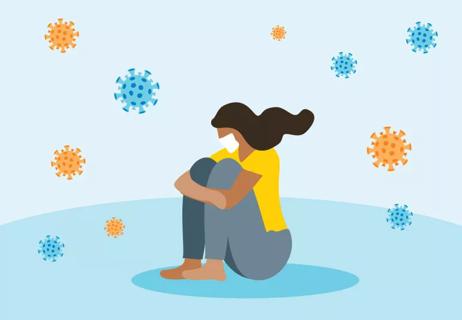There are three antigenic types of influenza, but A and B are responsible for our flu season

What we all know as “the” flu is actually a collection of influenza virus strains that mutate (change) over time. Protecting yourself from these potentially dangerous viruses is best done by getting the flu vaccine and practicing everyday prevention techniques like:
Advertisement
Cleveland Clinic is a non-profit academic medical center. Advertising on our site helps support our mission. We do not endorse non-Cleveland Clinic products or services. Policy
We talked with infectious disease doctor Sherif Mossad, MD, about the strains of flu and how you can keep from getting sick this flu season.
“What all flu strains have in common are the symptoms they cause,” Dr. Mossad says. “Fever. Headache. Cough. Those are the three cardinal manifestations of all flu viruses. Flu can cause stomach issues for some people, too, but ‘stomach flu’ is really a misnomer.”
There are three types of flu viruses that affect people. They’re known as influenza viruses A, B and C. Influenza A and influenza B viruses are the heavy hitters. They’re the ones that cause the most severe illness and lead to widespread outbreaks. Influenza C viruses cause mild illnesses in people. They’re more similar to a common cold, Dr. Mossad says, and they aren’t detected by flu tests.
(Fun fact: There is an influenza D virus, but it’s mostly found in cattle and hasn’t been known to affect people.)
When people talk about the flu, it’s really influenza A and B viruses. They’re the viruses that are responsible for our annual flu season.
Advertisement
Influenza A viruses are the most common flu viruses. They’re the cause of regular seasonal flu outbreaks, as well as global flu pandemics. Influenza A viruses can affect both people and animals.
The 1918 pandemic and the 2009 H1N1 pandemic (what some people call the “swine flu”), for example, were influenza A virus outbreaks.
Dr. Mossad says influenza A virus outbreaks usually occur earlier in the flu season. In the Northern Hemisphere, influenza A is most likely to make its rounds from October to March.
Common strains of influenza A include the H1N1 and H3N2 varieties.
Influenza B viruses affect only people, not animals, and they don’t spread to the point of pandemics. Influenza B viruses are more likely to make you sick later in the flu season, from about January to May in the Northern Hemisphere.
There are so many different strains of flu viruses that the World Health Organization (WHO) created an internationally accepted naming convention to help track them.
The name of each virus is made up of:
So, for example, the A/Sydney/05/97(H3N2) virus is an influenza A virus that originated in Sydney, is strain number five, was collected in 1997 and is an H3N2 subtype.
Long story short: There are boatloads of flu strains out there. And they’re constantly changing and creating new viruses.
Dr. Mossad explains there are two ways the flu virus mutates.
Antigenic driftrefers to the small ways in which the flu virus mutates each year. Antigenic drift is the reason for annual flu epidemics. So, even if you had one strain of H3N2 last year, it’s now a little different, and you can get it again this year.
Antigenic shiftis a tidal wave of flu virus mutation.
“Antigenic shift is when viruses change so much that you wind up with a virus that humans have never been exposed to at all,” Dr. Mossad says. “That’s what happened in 2009 with the H1N1 swine flu virus. It was an entirely new virus to humans, so no one had built up any immunity to it at all.”
Each year, the WHO and the U.S. Centers for Disease Control and Prevention (CDC) monitor trends to determine the strains of flu that’ll be most common. And each year, the flu vaccine is created to protect you from what these experts expect will be the two most prevalent influenza A viruses and two most prevalent influenza B viruses for that flu season.
Advertisement
Remember, the flu virus mutates. Fast. So, getting a flu shot every year is the absolute best method to protect yourself from the strains that are likely to make their rounds this season.
In addition to getting your flu shot every fall, Dr. Mossad suggests these best practices to stay healthy this flu season:
Advertisement
Learn more about our editorial process.
Advertisement

While it typically starts in October, vaccine effectiveness can affect its duration and severity

Get vaccinated, consider wearing a mask and stock your medicine cabinet

Influenza puts stress on your body and can lead to serious conditions like pneumonia or stroke

Resting, staying hydrated and taking over-the-counter medicine can help you recover quickly

You can spread the flu to others a day before you feel sick and for several days after

The antiviral medication can help curb symptoms and shorten recovery time

These nutritious foods will help your body to better fight the flu

Colds and the flu are still lurking this winter

Type 2 diabetes isn’t inevitable with these dietary changes

Applying a hot or cold compress can help with pain